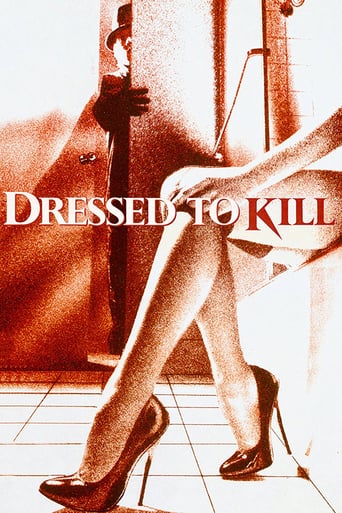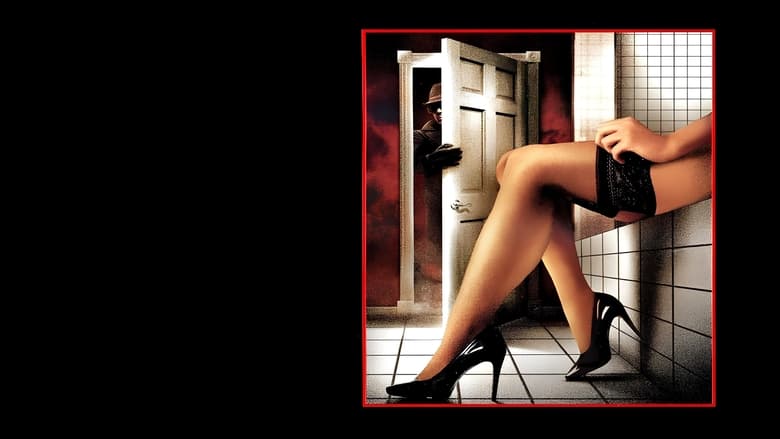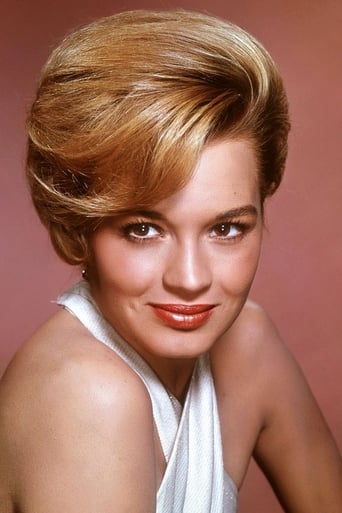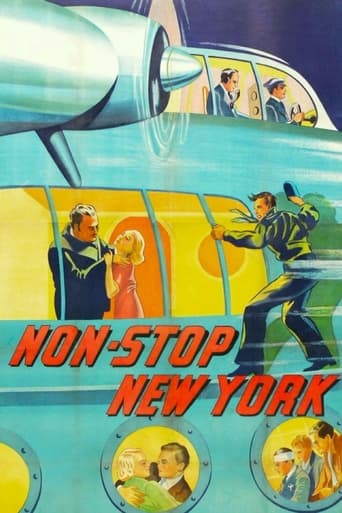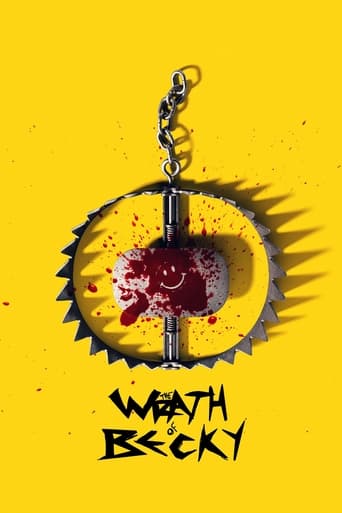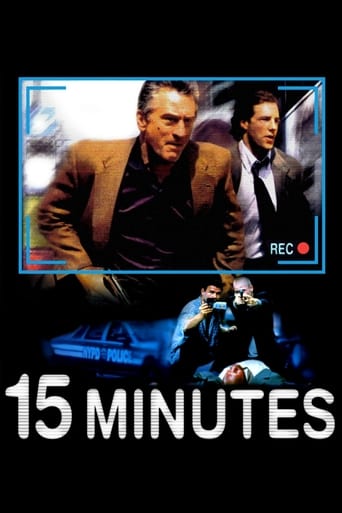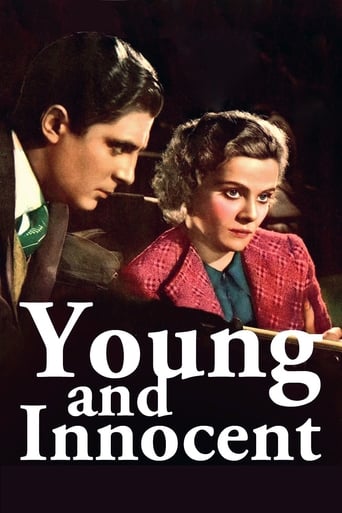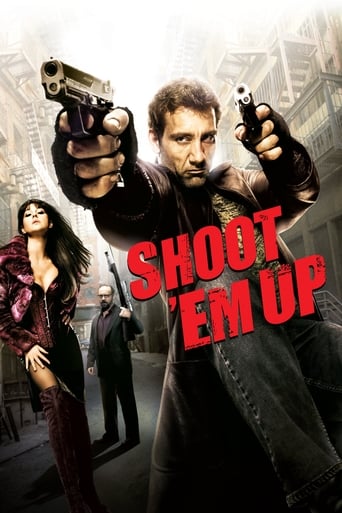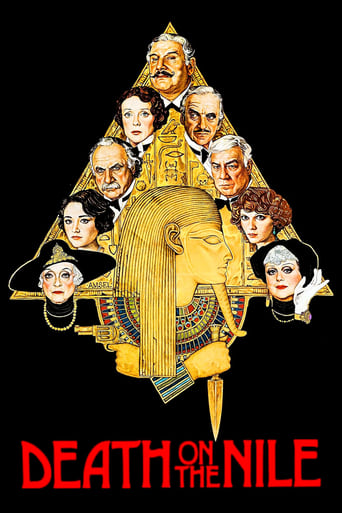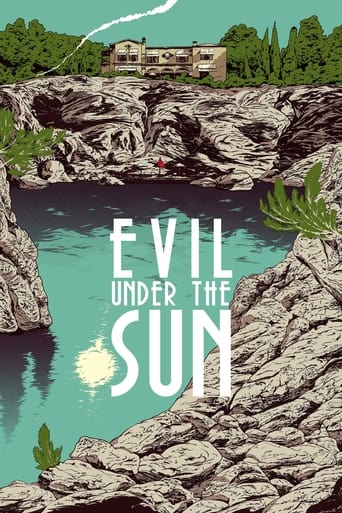Dressed to Kill (1980)
After witnessing a mysterious woman brutally slay a homemaker, prostitute Liz Blake finds herself trapped in a dangerous situation. While the police thinks she is the murderer, the real killer is intent on silencing her only witness.
Watch Trailer
Cast
Similar titles
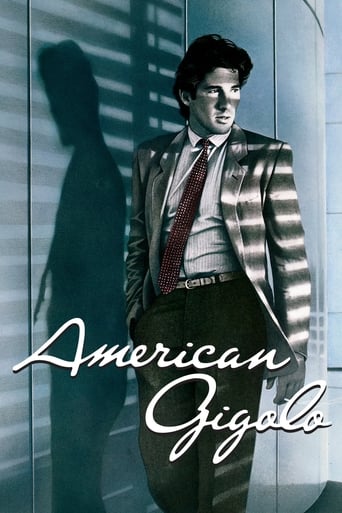
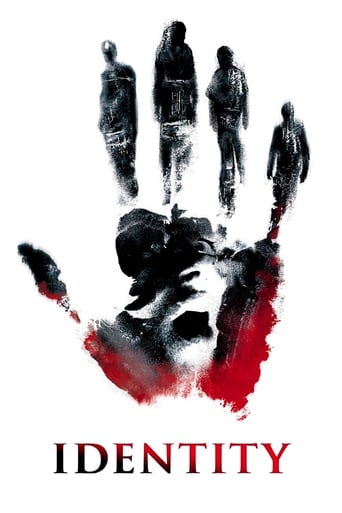
Reviews
hyped garbage
At first rather annoying in its heavy emphasis on reenactments, this movie ultimately proves fascinating, simply because the complicated, highly dramatic tale it tells still almost defies belief.
if their story seems completely bonkers, almost like a feverish work of fiction, you ain't heard nothing yet.
A terrific literary drama and character piece that shows how the process of creating art can be seen differently by those doing it and those looking at it from the outside.
Many find this a hard movie to stomach due to its misogyny. I'll see you that and raise you that it's a misanthropic film that presents all of humanity, male and female, in negative terms. The men in this film are actually treated the way women normally are in films, as either silent sex objects seen (Warren Lockman), sexless enemies (Kate's husband), shrill harpies that need to be defeated (Detective Marino) or sexless best friends who provide the hero with the tools they need to save the day (Peter). Seriously, in another film, one would think Peter would have sexual interest in Liz, but despite her double entendres and come ons, he remains more concerned with schedules and numbers and evidence.
Brian DePalma was born four days after Dario Argento on 11th September 1940, but they could have been separated at birth; and for those familiar with DePalma's work that would make you think of 'Sisters' (1973), a film that has a lot more to do with Hitchcock (an obvious influence on both their work), than with Argento in particular. The similarities come from an idiosyncratic assimilation of Hitchcock rather than from seeing and copying each other's work. Both directors like the 'Master' are relentless fetishists. I do find it hard to imagine DePalma's cinema without Argento's; 'Body Double' (1984), and 'Raising Cain' (1992) have grown out of 'Tenebre' (1982). Argento is a modernist rather than the more fashionable postmodern, and like Ingmar Bergman or John Ford he falls in and out of fashion with critics and the public. He has influenced his 'apprentices' Luigi Cozzi, Michele Soavi and Lamberto Bava; but he has also touched more celebrated filmmakers like John Carpenter (think 1978's 'Halloween'), Wes Craven, Takeshi Miike (Argento is 'big in Japan'), John Woo, David Fincher, and Spanish auteur Pedro Almodóvar. But with DePalma the influence runs a lot deeper even the word Doppelganger could be considered, but I'm not sure who you would point the finger at as being the unfortunate one. For all their similarities though, you can compare DePalma to Godard (most obviously with 'Greetings' (1968), and 'Hi, Mom!' (1970), and Godard has written of his admiration for DePalma's 'The Fury' 1978), whereas you can't easily compare Argento to Godard. It is helpful to think of DePalma as a jazz musician riffing on themes, his favourite pieces to riff on being 'Vertigo' and 'Psycho'. Familiar with 'Giallo,' he rarely cites them as influences (he claims to despise Argento's films). DePalma's dreamlike tangle of memory and desire owes less to Hitchcock than to the psychological 'Giallo' of Argento, and the baroque set pieces and sociopathic gender games of 'Dressed to Kill' and 'Body Double' scream Argento, but it's 'Raising Cain's' finale that completes the deal. A woman bends over to pick up her child, revealing the killer standing directly behind her, a scene straight out of 'Tenebrae'.'Dressed to Kill' could easily be described as a 'Giallo,' as DePalma pushes the boundaries of what is acceptable and in good taste (with mainstream cinema). 'Dressed To Kill' was a film that was released at the right time; post- Stonewall, post-feminist, post-disco, post-Son of Sam, pre-AIDS. However as controversial as DePalma wanted to be, 'Dressed to Kill' only has the whiff of cheap perfume compared to the pungent odor of its contemporaries of the grindhouse; William Lustig's 'Maniac' (1980), and Abel Ferrara's 'Ms. 45' (1981). Even another film from the big end of town, William Friedkin's 'Cruising' (1980), which DePalma had for a time been attached to was more controversial and sleazy; yet 'Dressed To Kill' shocked because more people saw it. DePalma uses paperback pulp psychology (pure 'Giallo'), to demonstrate that filmmaking is an inherently 'visual' storytelling medium. It is clear he is always more at home with scenes free of dialogue; the characters speak in pure soap opera exposition.The opening 'shower scene' establishes the theme; Kate is in the shower masturbating whilst watching probably her husband shaving; it's DePalma's 'thing', linking sexual stimulation to voyeurism. Hands clutch her from behind and she screams. Looking, pleasuring, violating. The sound design connects the next scene, where Kate is in bed moaning with 'ersatz' pleasure; talk radio dominates the soundtrack rather than a lush romantic musical score, and a high-angle shot fixes on the faceless husband and Kate's unfulfilled expression. Later, when she attempts to 'come on' to her shrink, the Doctor advises her to confront her husband about her anxieties. Before doing this, Kate visits the Metropolitan Museum of Art with nothing more on her mind than a shopping list (an inspired touch), and links up with a mysterious stranger. Following a hot and sweaty seduction in the back seat of a cab, she goes back to his apartment for a game of post-office. Immediately after, she is confronted by a mysterious blonde with a 'Giallo' like shiny straight razor. As Hitchcock had done audaciously in 'Psycho', DePalma does the unthinkable in the first act killing the woman we had assumed was the heroine. It's a dangerous trick, as the audience now has to reach out to new characters, Liz and Peter as the film starts again. Like Marcus in Argento's 'Deep Red', Liz (a prostitute, an outsider) must do the detective work.As with Argento, DePalma likes set-pieces featuring long takes with a mobile camera, and for DePalma in 'Dressed To Kill' it's the Metropolitan Museum of Art sequence. DePalma's obsessively moody overwrought sequence is a slice of the purest melodramatic overkill. DePalma's timing of Kate's impulses with the unreal ambiance and heightened emotion is overplayed to absurdity. Technically DePalma is as accomplished as ever.The Italian Argento, coming from a Catholic background, is at home with the torments of repression and guilt and the horrors they can produce. DePalma (from Newark with an Italian American Catholic background but attended Protestant and Quaker schools), embraces the hang-ups triggered by the liberation of a 'permissive' society. 'Dressed To Kill' celebrates the allure of perversion and desire, and the guilt that can create.The mistaken identity conceit is something DePalma had explored in 'Sisters' and 'Obsession' (1976), and would be revisited in 'Body Double' (1984), though all of this originates with Hitchcock's 'Vertigo' (1958). The cross- dressing and shower traumas are clearly from 'Psycho', as is the clinical explanation that ends proceedings. Always full of self-confidence, in the finale DePalma references 'Sisters' and the 'Carrie' (1976) dream and shock ending, it also hearkens back to the opening of 'Halloween' and prefigures its own parody, 'Blow Out' (1981).
Prompted by the new documentary on De Palma, I finally sat down and watched this film. Maybe I shouldn't have been surprised, but I was: It's really nothing but a tarted-up giallo, the sort of thing Mario Bava or Dario Argento might have made, only with a 20-times-bigger budget and at least one bigger star. Like the Italian giallos, it has a complicated, thoroughly preposterous comic-book-Hitchcock plot, the same salaciousness, the same lurid violence, the same air of unreality. However, where Argento films tend to have jarringly inappropriate electronic rock scores, this one has an equally inappropriate lush romantic score that reminded me of a high-priced supper club. Granted, context is everything. If "Dressed to Kill" were the work of some little-known Italian genre specialist, I'm sure I'd be praising it right now. I like giallos. Lurid and preposterous? Not a problem. But for a well-regarded (if controversial) Hollywood box-office hit, the film seems stupid, fakey, and somewhat distasteful. Even with a body double, you'd think Angie Dickinson would have been embarrassed by it.I actually found myself looking away at times -- not because of the excessive (and really pretty gratuitous) blood and nudity, but because of the horribly stilted acting by Dickinson and, even worse, by Nancy Allen. I guess it's been said a million times, but wow, the latter certainly was lucky to have been married to De Palma. It's hard to imagine any other way she'd ever have been cast. (Nice lady, I'm sure. Pleasant enough in "Strange Invaders.")The film is currently 35 years old, and it feels it. The plot seems crude. The action scenes, sometimes in slow motion, feel stagey and unreal. The police-procedural aspects and the scenes involving psychotherapy also seem unreal (though that sort of thing is par for the course in giallos). What also felt dated -- and, God knows, politically incorrect by today's standards -- was the treatment of blacks and transsexuals, though I must admit this seemed downright refreshing. P.S. I once had a long conversation with a film-school student who'd just won some sort of college-level directing award, and I remember asking him whom he regarded as the most overrated director then working. Without much of a pause, he said, "Brian De Palma" -- which I thought was a pretty good answer. Still, I do very much enjoy "Phantom of the Paradise" and "Carlito's Way."
I read somewhere that Hitchcock was reportedly unhappy with the extent to which De Palma's previous thriller, "Obsession" (1976), borrowed from his acknowledged masterpiece "Vertigo". If this is true, the master should have saved up his vitriol for the next de Palma work in the genre he made famous - "Dressed to Kill", which raises serious questions about the line between homage and rip off, if such a line exists at all.As a big fan of the movie, de Palma's best pure suspense work of all, I believe that its feet are firmly in the homage camp. De Palma had style of his own to spare; his movie doesn't rely on our familiarity with "Psycho" to carry itself along: rather it's a treat for fans of the 1960 classic as it wears its influence on its sleeve, but develops into a different beast."Dressed to Kill" - and this is not a slight on "Psycho" - goes further with some of the themes of the 1960 film. Transexuality was hinted at in Hitchcock's film; here it is actually explored. The killer's sexual motive is also more fully explored. A mere "rip off" would not bother trying to juggle these themes: it would give them a nod to make sure we caught them and leave it at that. Rip offs take laziness; proper homage takes dedication and research. We get them both here.It is also true that the movie uses another sublime Hitchcock touch which we also saw in his first thriller, "Sisters" - the character presumed to be the protagonist meets a surprising end and the movie abruptly shifts gear as a new, entirely different kind of main character is introduced.There are an infinite number of ways in which a filmmaker or storyteller can substitute one protagonist for another. The master did it particularly effectively, yes, but the technique is too broad in its applications for us to claim it as his own entirely.Lastly, a word about the casting, and its sexual implications. The surprisingly graphic opening scene, with an ageing Angie Dickinson in the shower, shows us perhaps more than we wanted to see. It is a blessing, then, when she is replaced by Nancy Allen's call girl, who has a few scenes that make this one of the sexiest movies ever made.
